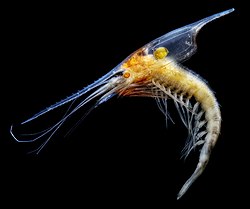| Multicrustacea Temporal range: | |
|---|---|
 | |
| From left to right and from top to bottom: Grapsus grapsus (a crab), Homarus gammarus (a lobster), Procambarus clarkii (a crayfish), Lysmata amboinensis (a shrimp), Euphausia superba (a krill), Hemilepistus reaumuri (a woodlouse), Calanoida (a copepod), and Lepas anatifera (a barnacle) | |
| Scientific classification | |
| Kingdom: | Animalia |
| Phylum: | Arthropoda |
| Clade: | Pancrustacea |
| Superclass: | Multicrustacea Regier, Shultz, Zwick, Hussey, Ball, Wetzer, Martin & Cunningham, 2010 |
| Classes | |
The clade [1] [2] [3] [4] Multicrustacea constitutes the largest superclass of crustaceans, containing approximately four-fifths of all described non-hexapod crustacean species, including crabs, lobsters, crayfish, shrimp, krill, prawns, woodlice, barnacles, copepods, amphipods, mantis shrimp and others. The largest branch of Multicrustacea is the class Malacostraca (see below).

















